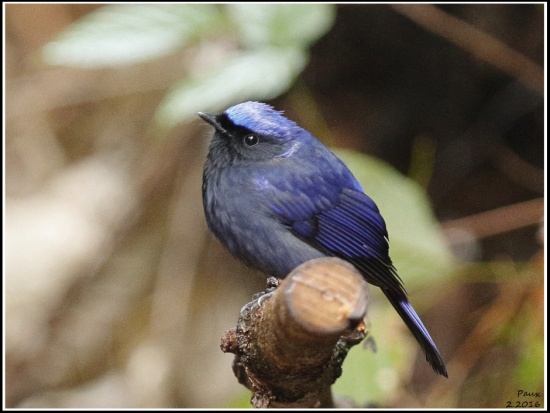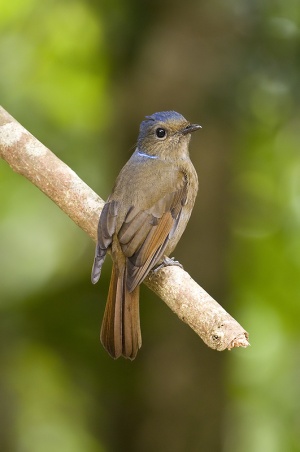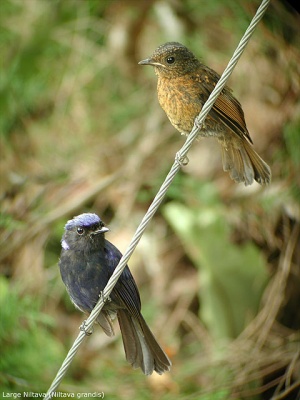- Niltava grandis
Identification
20–22 cm (7¾-8½ in)
- Overall dark slaty blue, can appear black from a distance
- Blue shiny crown and shoulder stripe distinctive, can be striking
- Black throat and breast
Female
- Olive-brown
- Lighter belly
Juvenile - light-brown with whitish spots
Distribution
Nepal, Bhutan, western India, Myanmar, Thailand, Cambodia, and southwest China.
Taxonomy
Large Niltava has four subspecies:
- N. g. grandis:
- N. g. griseiventris:
- Southern China (south-eastern Yunnan)
- N. g. decipiens:
- N. g. decorata:
- Southern Laos (Langbian Plateau)
Habitat
Humid, dense, broad-leafed forest, often near a stream.
Behaviour
Diet
Their diet consists of small to medium insects, crickets and even small snakes. They also eat small berries.
Breeding
The nest is cup-shaped (either open or domed) constructed from mosses, lichen and rootlets and placed among rocks, beside a tree-trunk, or in a shallow cavity in a rotten stump at about 6 meters from the ground.
References
- Clements, J. F., T. S. Schulenberg, M. J. Iliff, D. Roberson, T. A. Fredericks, B. L. Sullivan, and C. L. Wood. 2016. The eBird/Clements checklist of birds of the world: v2016, with updates to August 2016. Downloaded from http://www.birds.cornell.edu/clementschecklist/download/
- Answers.com
- Kazmierczak, K and B van Perlo. 2000. A Field Guide to the Birds of the Indian Subcontinent. New Haven: Yale Univ. Press. ISBN 978-0300079210
- Handbook of the Birds of the World Alive (retrieved December 2016)
Recommended Citation
- BirdForum Opus contributors. (2024) Large Niltava. In: BirdForum, the forum for wild birds and birding. Retrieved 28 April 2024 from https://www.birdforum.net/opus/Large_Niltava






